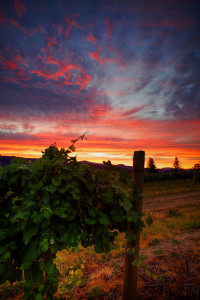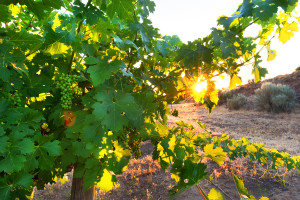The following article is my latest contribution to the print magazine SOMM Journal. I feel very honored to have been given the opportunity to write for this fantastic periodical and encourage each and every one of you to check it out when you get a chance. With 6 issues per year, subscriptions are FREE to those in the wine industry. There is a fee for non-industry folks. Please visit the SOMM Journal site to download the latest issue of the journal, as well as read web-only exclusives. You may also subscribe to SOMM Journal on their website or go there directly by clicking here.
Printed for the first time online with permission.
Without further ado, here is my piece (unedited) for SOMM Journal:
Editor’s Note: The effects of climate change on the global wine industry are not at all uniform. Each individual region may suffer its own unique effects, some of which will be described in more detail in subsequent articles in this magazine. This piece highlights the general effects of climate change on the wine regions of Washington and Oregon.
Climate change is a very real threat to not only viticulture but every living system worldwide. We’ve discussed some general global trends in past issues, but today thus focus will be on the effects of climate change on two very well-known wine regions in the United States: Washington and Oregon.
Temperature
Between 2000 and 2039, models are predicting growing degree day increases in the Willamette and Columbia Valleys from 100 to 200 days. Additionally, temperatures are predicted to increase between 0.6-0.7oC and 0.6-1.0oC in the Willamette and Columbia Valleys, respectively. Finally, the number of growing degree days over 35oC are expected to increase to upwards of 7.5 days in the Columbia Valley, while spring and fall minimum temperatures below -6.7oC are expected to decrease by 5 or 6 days in the same region.
Frost
In Washington and Oregon, the number of days with frost has decreased. Specifically, there are 18 fewer frost days per year on average than in years previous. Most of the reduction in frost days has been in the spring, though there also has been a smaller reduction in frost days in the fall.
In general, Washington and Oregon are seeing earlier last frost dates than in the past, as well as longer frost-free periods throughout the entire growing season.
Drought
With increasing temperatures, snowpack depth will decrease, leaving less water for crops the following season. So far this year, the Governor of Oregon has declared drought emergencies in 19 counties, an increase from 9 last year.
According to Dr. Gregory Jones, a top climate scientist at Southern Oregon University, one of the most pressing issues directly related to climate change and wine production in Washington and Oregon is consistent water availability. “The west could have access issues from shifting seasonality of precipitation or changes in snow amount and timing.”
Most of us are aware of the on-going drought in California, so it’s only a matter of time we see similar droughts in Oregon and Washington as temperatures increase further.
Increase in Premium Wine Production Sites
One possible benefit of climate change on Washington and Oregon could be a shift in premium wine production. With increasing temperatures and reduced frost days, many vineyard sites will be more similar to today’s premium wine growing regions in California, allowing for more premium vineyard sites in Washington and Oregon and longer growing seasons for better ripening.
It’s important to note that one major difference between the climates of CA and Washington and Oregon is the humidity. While temperatures in Washington and Oregon are expected to increase, the humidity levels are also higher, thus potentially increasing disease pressure from molds and mildews. Premium wine production will certainly be possible due to increasing temperatures, but winemakers should be aware that they will need to keep up with technology to reduce disease pressure should humidity levels also rise.
What About Pinot Noir?
When you think of the Pacific Northwest, and Oregon in particular, Pinot Noir is typically the first thing that comes to mind. Pinot Noir is a relatively sensitive fruit, with ideal growing temperatures between 14 and 16oC. As Oregon and Washington’s temperatures increase, will the Pinot vines need to be replaced with a more heat-tolerant variety like Cabernet Sauvignon?
Dr. Jones says no. He told SOMM Journal that “the majority of the region [is not growing] Pinot Noir. The reason is that much of the Pinot Noir regions are still relatively cool side of the climate spectrum. Continued warming would push them up the ladder of Pinot Noir ripening, moving from more elegant, finesse styles to bolder, more lush Pinot Noir styles. But it would take 2-4 degrees of warming to do this for most areas and a little more to make them likely not suitable, so there is some ways to go.”
Future of Wine in Washington and Oregon
In addition to increased premium wine production sites in Washington and Oregon, we’ll likely see the rise of newer AVAs in that region.
According to Dr. Jones, “50 years ago the Willamette Valley was a challenging place to grow grapes, too cool and short growing seasons with very wet falls. Now it is a prime Pinot Noir, cool climate variety region with much more consistent and warmer growing seasons. Today a similar place is the Puget Sound, right at the cool margin. [There are] numerous locations within the Puget Sound, with a little warmer growing season, [that] could be a prime cool climate variety region.”
Conclusions
At first glance, it would appear that climate change may actually be more beneficial for Washington and Oregon wine, at least for the next 50-100 years. With less frost and greater potential for premium wine sites, climate change might be looking pretty good for Washington and Oregon wine.
Of course, drought pressure may put a damper on some of the more positive aspects that we expect to see, but improved technology and increased awareness and conservation may improve the regions chances of becoming a top premium wine producer not only in the United States, but on the global scale.
Selected References



1 comment for “The Effect of Climate Change on the Washington and Oregon Wine Industries – My Latest Contribution to SOMM Journal”